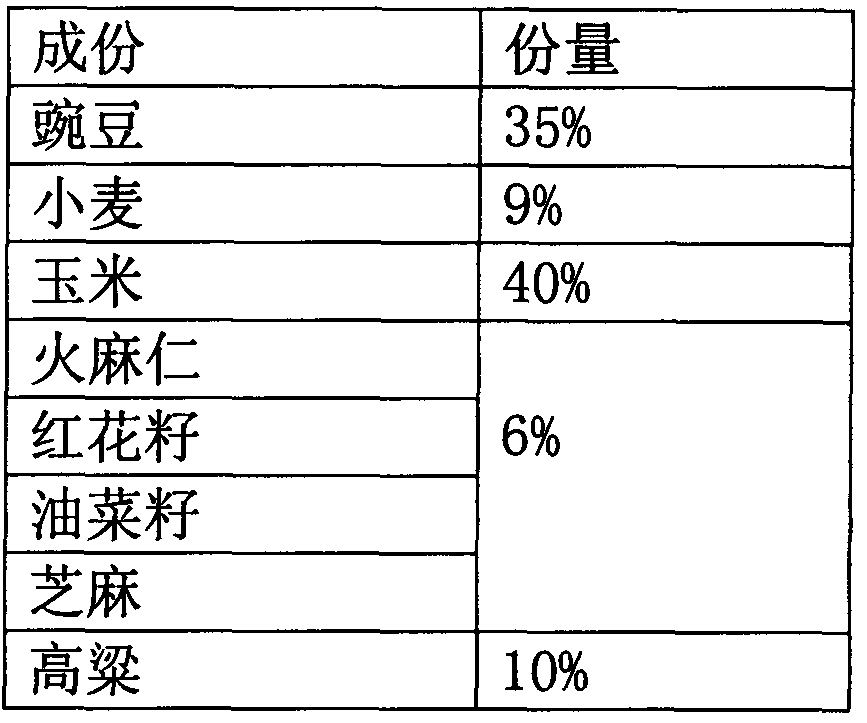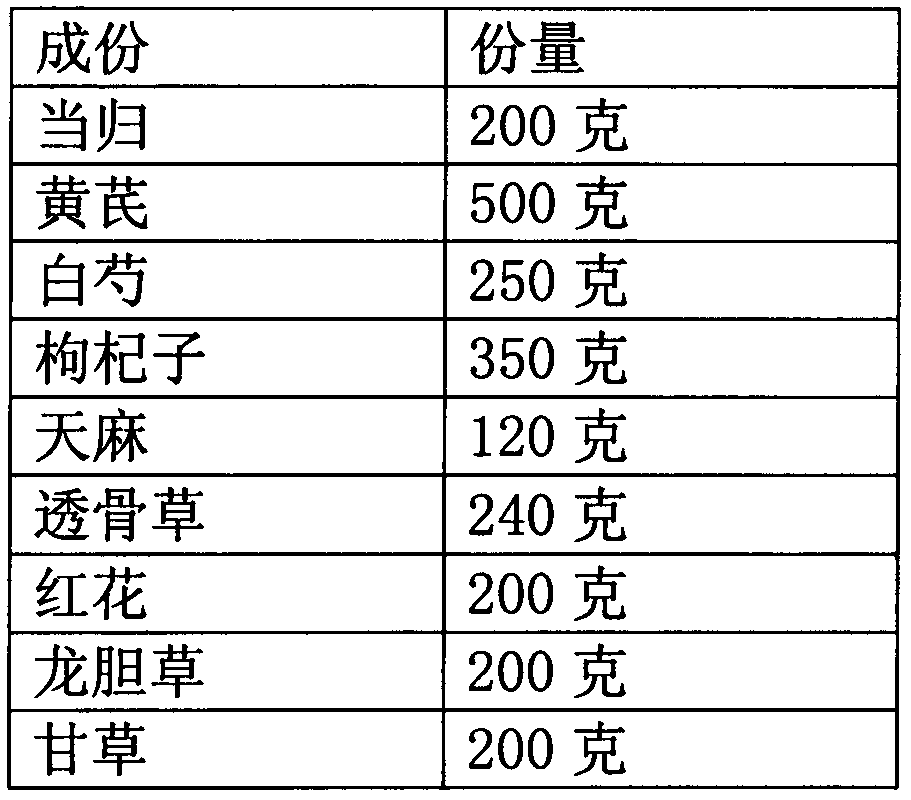Method for breeding edible medicinal young pigeons
A technology of squab and medicine, which is applied in the field of poultry farming, can solve problems such as threats to human health, imperfect feed ratios, and food safety concerns
- Summary
- Abstract
- Description
- Claims
- Application Information
AI Technical Summary
Problems solved by technology
Method used
Image
Examples
Embodiment Construction
[0010] As shown in the figure: the feed ratio is: 35% of peas, 9% of wheat, 40% of corn, hemp or safflower seeds, rapeseed, 6% of sesame, and 10% of sorghum.
[0011] 70 grams of health-care sand is supplied for every 1000 grams of feed. The ratio of health-care sand is: 30% shellfish, 18% bone meal, 5% fish meal, 0.2% cod liver oil powder, 4% vitamin E powder, 3% multidimensional powder, and 5% animal salt. %, brown sugar 2%, stone powder 0.1%, medium-grained sand 20%, gypsum powder 0.2%, calcium gluconate powder 0.2%, red iron 0.2%, oxygen 0.2%, verdigris 0.2%, methionine 0.4%, lysine 0.5% 11% of red soil away from pollution sources.
[0012] The ratio of medicinal liquid in the drinking water of pigeons is: 200 grams of angelica, 500 grams of astragalus, 250 grams of white peony, 350 grams of medlar, 120 grams of Gastrodia elata, 240 grams of Speranthema safflower, 200 grams of safflower, and 200 grams of gentian , 200 grams of licorice, decoct the above Chinese medicine i...
PUM
 Login to View More
Login to View More Abstract
Description
Claims
Application Information
 Login to View More
Login to View More - R&D
- Intellectual Property
- Life Sciences
- Materials
- Tech Scout
- Unparalleled Data Quality
- Higher Quality Content
- 60% Fewer Hallucinations
Browse by: Latest US Patents, China's latest patents, Technical Efficacy Thesaurus, Application Domain, Technology Topic, Popular Technical Reports.
© 2025 PatSnap. All rights reserved.Legal|Privacy policy|Modern Slavery Act Transparency Statement|Sitemap|About US| Contact US: help@patsnap.com



